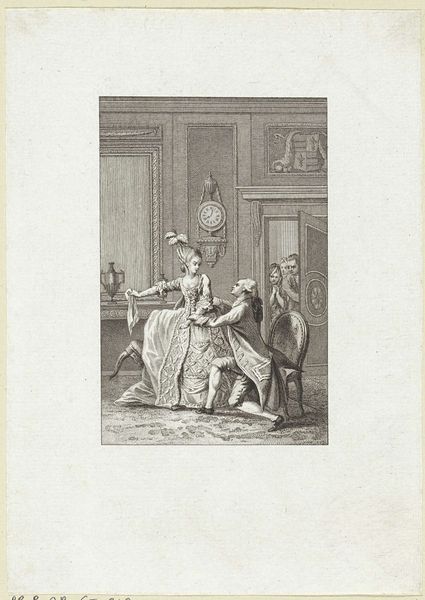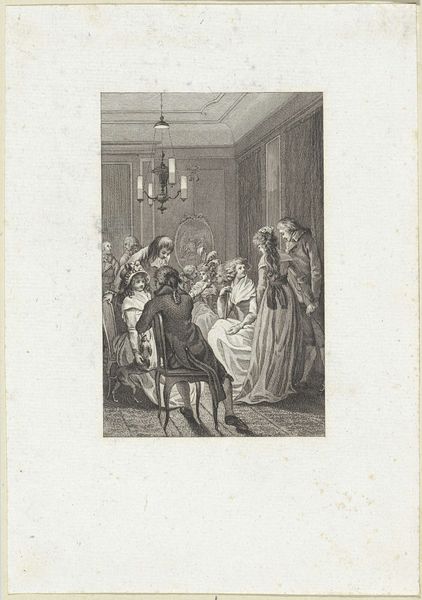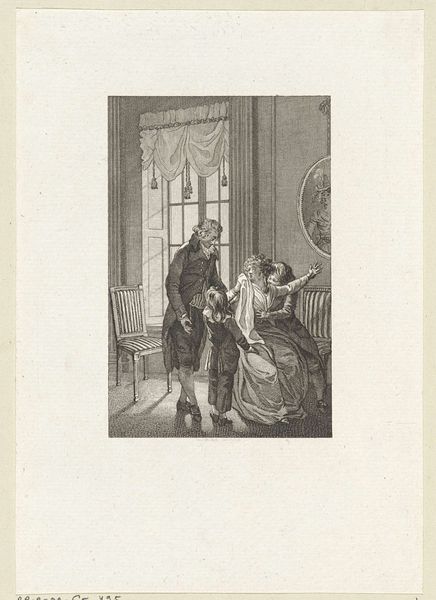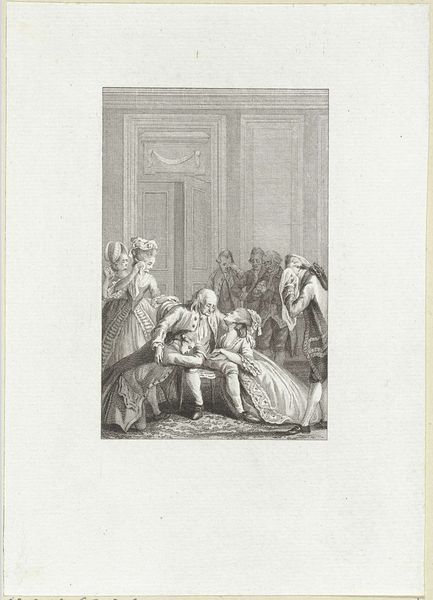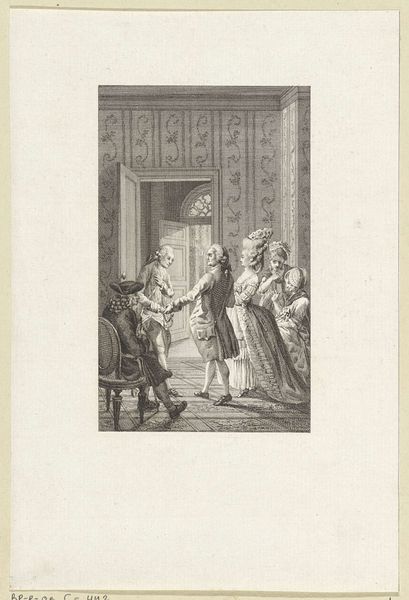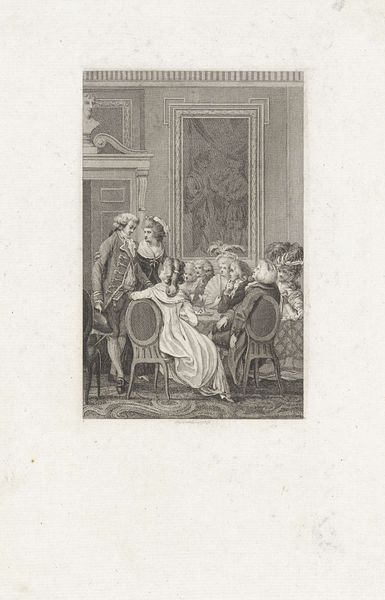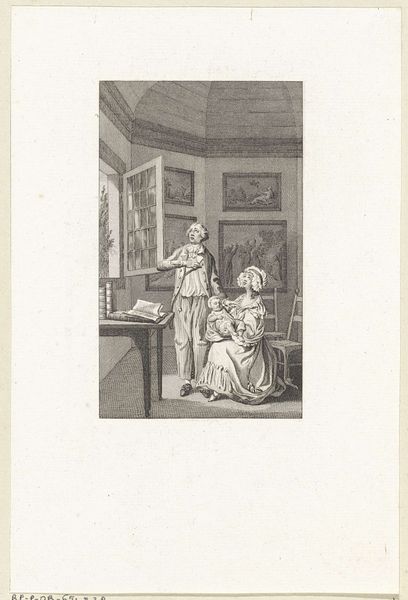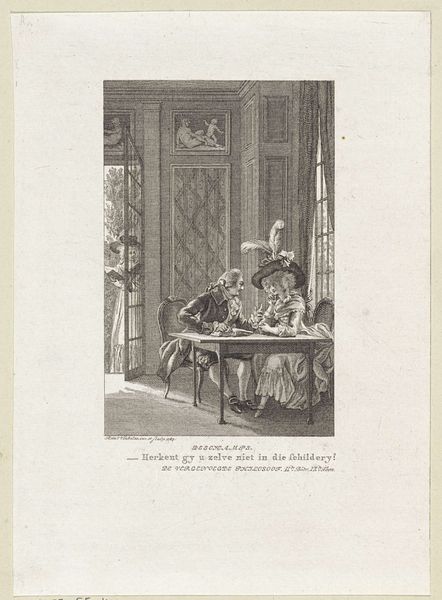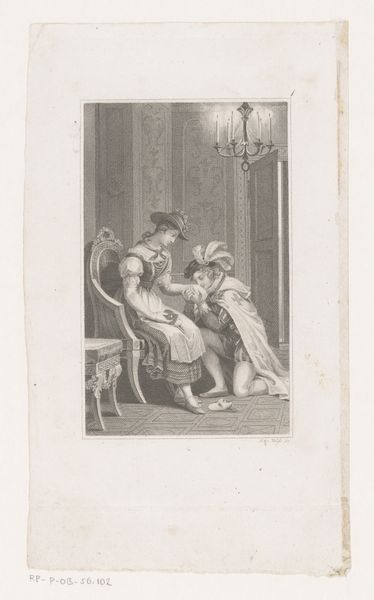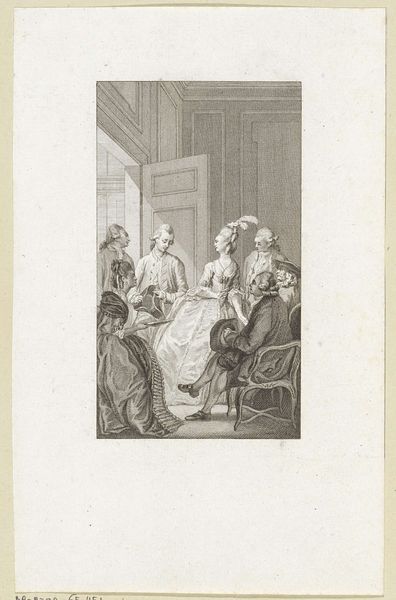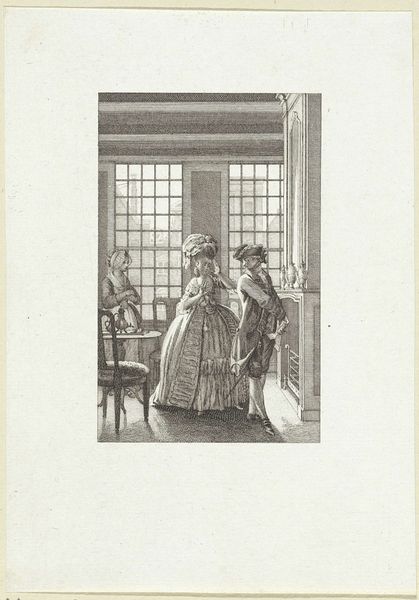
print, engraving
#
portrait
#
neoclacissism
#
narrative-art
# print
#
old engraving style
#
figuration
#
group-portraits
#
romanticism
#
line
#
genre-painting
#
history-painting
#
academic-art
#
engraving
Dimensions: height 210 mm, width 148 mm
Copyright: Rijks Museum: Open Domain
Curator: Welcome to this closer look at Reinier Vinkeles' engraving, "Man doet een vrouw een aanzoek," created in 1798. The piece is currently held here at the Rijksmuseum. Editor: It’s rather delicate, isn't it? And there is this air of...expectation hanging around the moment. The man's pose seems so vulnerable, almost desperate. Curator: Indeed. Note the fine lines of the engraving, achieving delicate tonal shifts that provide significant depth and texture. See how Vinkeles employs hatching and cross-hatching, effectively suggesting the fall of light and shadow. Editor: And that window opening onto the garden. It's such a theatrical device, inviting us to consider the external pressures, the social expectations literally looming. Who are these onlookers and what influence will they have on the outcome? I find myself wondering if the woman feels she has agency, or whether she will yield to societal pressure to accept his offer. Curator: Vinkeles certainly creates a nuanced dynamic through the placement and rendering of figures and space. His Neoclassical approach is clearly visible in his attention to classical forms and balance. But the subtle touches of Romanticism create emotion that deviates from pure classicism. The clean lines of the figures contrasted with the implied internal turmoil. The open window further hints at that, visually integrating nature, the sublime and perhaps freedom from societal norms, as a counterpoint to domestic confines. Editor: Do you find this presentation a tad performative, even staged? The neat posture, and that pleading, but rehearsed quality of gesture and bow. Also, does that proximity to the garden present freedom or the limitations to women who could only experience liberation via arranged marriage, but still feel obligated? Curator: These social structures cannot be divorced from its historical milieu. But within the frame of the work itself, we can study Vinkeles' strategic use of light and shadow to underscore the tensions. The balance achieved between precision and dramatic emotion offers a window into the late 18th century. Editor: By studying the intersections of form and social history in artworks, we not only understand what an image looks like, but we can study the period that influenced the conditions and societal impacts of this interaction between two people seeking approval to co-create something bigger. I'll certainly consider the complexities of the historical positionality and constraints more closely on the way out!
Comments
No comments
Be the first to comment and join the conversation on the ultimate creative platform.

